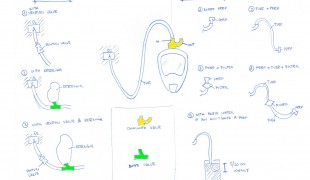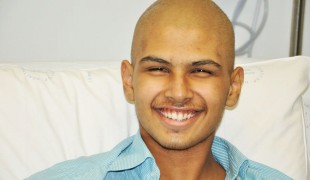- 5518
- 372
- 5
- 6
- 0
- Help Ukraine
About the solution
With a degree in aerospace engineering, Ashwinraj was inspired to create this technology after the death of a colleague.
“A couple of weeks before I left for University of Virginia (UVA), she went in for surgery. “It was a standard surgery, nothing serious. She went home that day. A few days later, she passed away because the wound got infected. It was a surgical site infection caused by faulty wound dressing. The surgery did not go wrong, but the dressing was faulty. That’s when I started looking into this issue. It dawned on me that if the problem was this bad in the United States, then it must be much worse in developing countries, where treatments aren’t affordable and health care systems and facilities are not advanced”, he explained.
So the entrepreneur started researching about wound care in developing countries, talking to doctors, patients, industry professionals, etc. and realised there was an unmet need in these areas. He ended up focusing on chronic wound care treatment in the south on India, where a lot of people is diabetic and is at high risk to suffer from chronic wounds.
Phoenix-Aid consists of a five-layered wound care dressing addresses what he has coined “the ABCs of wound healing” – A to accelerate the healing of the wound, B to block pathogens entering the wound site and C to comfort the wound itself.
“In short, what we’re doing is creating something that is moisture attentive and breathable, while at the same time actively and passively killing pathogens,” Karthikeyan said. “It does this efficiently and effectively so that it doesn’t damage the wound, and is durable while still being at a price point that patients can afford”, he said.
He was able to raise money thanks to academic and entrepreneurial prizes and competitions.
Adapted from: https://at.virginia.edu/2hLcoTC
More info: https://www.inmed.bio/
https://www.youtube.com/watch?v=1xn0h2XGs7Y
This solution shall not include mention to the use of drugs, chemicals or biologicals (including food); invasive devices; offensive, commercial or inherently dangerous content. This solution was not medically validated. Proceed with caution! If you have any doubts, please consult with a health professional.
DISCLAIMER: This story was written by someone who is not the author of the solution, therefore please be advised that, although it was written with the utmost respect for the innovation and the innovator, there can be some incorrect statements. If you find any errors please contact the patient Innovation team via info@patient-innovation.com
-
-
294
-
0
-
5481

Team develops emergency mask for hospital ventilators
Social interaction
(SELF)-CARE: HYGIENE: Maintaining personal hygiene
Covid19
3d Printed
Body-Worn solutions (Clothing, accessories, shoes, sensors...)
Treatment/Surgical device
Sore throat
Fever
Fatigue
Difficulty breathing deeply
Nasal congestion
Dry cough
Sinus pain or pressure.
Shortness of breath
Improving respiratory function
To improve Treatment/Therapy
Preventing (Vaccination, Protection, Falls, Research/Mapping)
General and Family Medicine
Infectious Diseases
Intensive Care Medicine
Internal Medicine
Pneumology
Italy
-
-
-
102
-
0
-
1369

Researchers develop open source personal respirator for healthcare workers fighting Covid-19
(SELF)-CARE: HYGIENE: Maintaining personal hygiene
CAREGIVING
Covid19
Body-Worn solutions (Clothing, accessories, shoes, sensors...)
Treatment/Surgical device
Sore throat
Fever
Fatigue
Difficulty breathing deeply
Nasal congestion
Dry cough
Sinus pain or pressure.
Shortness of breath
Improving respiratory function
Promoting self-management
To improve Treatment/Therapy
Preventing (Vaccination, Protection, Falls, Research/Mapping)
Caregiving Support
General and Family Medicine
Infectious Diseases
Intensive Care Medicine
Pneumology
United Kingdom
-
-
-
302
-
0
-
5425

Cancer survivor creates special bed for patients
SLEEP FUNCTION: Resting
Leukaemia
Myelodysplastic Disorders
Myeloproliferative Disorder
Lymphoma Hodgkin's Disease
Generalized Lymphadenopathy
Treatment/Surgical device
Assistive Daily Life Device (to help ADL)
Recurrent fevers
Difficulty fighting off infections
Swollen lymph nodes
Frequent infections
Joint pain or swelling
Recurrent or chronic diarrhea
Difficulty healing wounds
Fatigue
Changes in appetite or weight
Swelling or inflammation
To improve Treatment/Therapy
Preventing (Vaccination, Protection, Falls, Research/Mapping)
Clinical Hematology
Intensive Care Medicine
Physical Medicine and Rehabilitation
Australia
-
 en
en